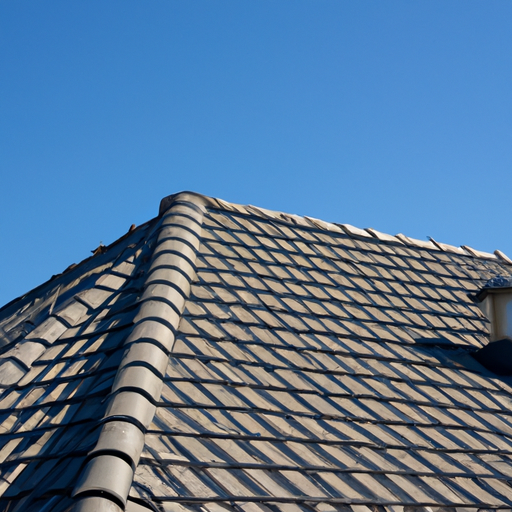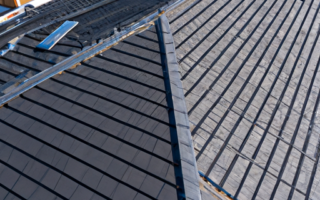Introduction to Roof Construction: Exploring the Materials and Techniques
Introduction to Roof Construction: Exploring the Materials and Techniques
When it comes to constructing a roof, it is essential to choose the right materials and techniques to ensure its durability and effectiveness in protecting the building. Whether you are building a new roof or renovating an existing one, understanding the different materials and techniques involved is crucial for a successful construction project.
The choice of roofing materials depends on various factors such as climate, budget, architectural style, and personal preferences. Here, we will explore some of the most commonly used materials in roof construction:
1. Asphalt Shingles: Asphalt shingles are the most popular choice due to their affordability, versatility, and ease of installation. They are available in various colors and styles, providing a wide range of options for homeowners.
2. Metal Roofing: Metal roofs have gained popularity in recent years due to their longevity, energy efficiency, and eco-friendliness. They can be made of steel, aluminum, or copper, offering a durable and low-maintenance roofing solution.
3. Clay Tiles: Clay tiles provide a unique and elegant look to a roof. They are commonly used in Mediterranean-style or Spanish-style architecture. Clay tiles are known for their durability and resistance to fire, but they can be heavy and require extra structural support.
4. Slate: Slate is a natural stone material that offers a luxurious and distinctive appearance to a roof. It is highly durable, fire-resistant, and can last for decades if properly maintained. However, slate is a costly option and requires skilled craftsmanship for installation.
In addition to the materials used, the construction techniques play a vital role in the longevity and performance of a roof. Here are some common techniques employed in roof construction:
1. Framing: The roof framing involves the design and structure of the roof’s support system. It includes rafters, trusses, and beams that carry the weight of the roof. Proper framing ensures the structural integrity of the roof and supports the chosen roofing material.
2. Underlayment: The underlayment is a layer of material installed directly on the roof deck before the final roofing material is applied. It acts as a barrier against water penetration and helps to prolong the lifespan of the roof.
3. Flashing: Flashing is used to prevent water leaks in vulnerable areas such as roof valleys, chimneys, skylights, and vents. It is typically made of metal and serves as a watertight barrier to protect these areas from water damage.
4. Ventilation: Proper ventilation is crucial to maintain a healthy and long-lasting roof. It helps to regulate the temperature, reduce moisture buildup, and prevent issues like mold and rot. Various ventilation systems, such as ridge vents, soffit vents, and gable vents, can be incorporated into the roof design.
Maintaining a roof is equally important to ensure its longevity and performance over time. Regular inspections, cleaning debris, and timely repairs are essential for preventing major issues and extending the roof’s lifespan.
In conclusion, understanding the materials and techniques involved in roof construction is essential for a successful roofing project. Considering factors such as climate, budget, and architectural style will help in selecting the right materials, while employing proper construction techniques and regular maintenance will contribute to the long-term durability and effectiveness of the roof.
Choosing the Right Roofing Material: A Comparative Analysis
Choosing the right roofing material is a crucial decision when it comes to constructing or renovating a roof. With a wide array of options available in the market, it is essential to understand the characteristics, benefits, and drawbacks of each material before making a final choice.
One of the most popular roofing materials is asphalt shingles. These shingles are affordable, easy to install, and come in a variety of colors and styles. They are also durable and can withstand harsh weather conditions. However, they have a shorter lifespan compared to other materials and may not be the best choice for areas prone to high winds or extreme temperature fluctuations.
Metal roofs, on the other hand, are gaining popularity for their durability and longevity. Metals like steel, aluminum, and copper are commonly used in metal roofing. They are resistant to fire, rot, and insects, and can last for several decades. Metal roofs also offer excellent energy efficiency, reflecting heat and reducing cooling costs. The only downside is that they can be more expensive than other roofing materials.
If you are looking for a more eco-friendly option, consider installing a green roof. Green roofs are covered with vegetation and offer numerous benefits such as improving air quality, reducing stormwater runoff, and providing insulation. They also increase the lifespan of the roof membrane and provide an aesthetic appeal. However, green roofs require additional structural support and regular maintenance.
For a classic and timeless look, slate and clay tiles are a great choice. These materials are incredibly durable and can last for over a century. They are also resistant to fire and insects. However, they are heavier than other roofing materials, requiring a strong and sturdy roof structure. Slate and clay tiles can also be costly, and their installation requires skilled professionals.
Another option to consider is wood shingles or shakes. Wood roofs provide a natural and rustic appearance and are a renewable resource. They have excellent insulation properties and are resistant to impact. However, they require regular maintenance to prevent mold, rot, and insect infestations. Wood roofs are also more susceptible to fire hazards, so it is essential to treat them with fire-retardant chemicals.
In addition to considering the characteristics of different roofing materials, it is crucial to factor in the climate and environmental conditions of the area. Consult with a professional roofing contractor to determine the best material for your specific needs.
Choosing the right roofing material is a long-term investment. By considering factors such as durability, cost, energy efficiency, and aesthetic appeal, you can make an informed decision that will protect your property and enhance its value for years to come.
Roof Construction Techniques: From Framing to Installation
Roof construction is a critical aspect of building a sturdy and durable structure. It involves a series of techniques that ensure the roof is strong enough to withstand various weather conditions, while also providing adequate insulation for the building. From framing to installation, each step in the roof construction process requires careful planning and execution to achieve the desired results.
One of the primary techniques involved in roof construction is framing. Framing provides the structural support for the roof by establishing the shape and pitch. Common types of roof framing include traditional stick framing, truss framing, and timber framing. Stick framing involves assembling individual rafters and joists on the site, while truss framing utilizes pre-made triangular structures that are lifted and fitted onto the building. Timber framing, on the other hand, uses heavy timber beams or logs to create a robust roof frame.
Once the framing is in place, the next step in roof construction is sheathing or decking. Sheathing refers to the solid panels that are attached to the roof frame to provide a stable base for the roof covering. It is commonly made from plywood or oriented strand board (OSB) and is nailed or screwed onto the frame. The sheathing also helps distribute the weight evenly across the roof’s surface.
The installation of underlayment is another crucial technique in roof construction. Underlayment acts as a waterproof barrier between the roof covering and the underlying structure. It prevents water infiltration and protects the roof from potential leaks. Common types of underlayment include asphalt-saturated felt, synthetic materials like rubberized asphalt, and specialized membranes designed for specific roof coverings such as metal or tile.
Roof covering installation is the final step in the roof construction process. This involves placing the materials that act as the visible layer of the roof, providing aesthetic appeal and protection against the elements. Roof coverings can include asphalt shingles, metal sheets, tiles, or even thatch. The choice of roof covering depends on factors such as durability, cost, climate, and the architectural style of the building.
Maintaining the roof is equally important to ensure its longevity. Regular inspections, cleaning debris, and addressing any damage promptly are crucial aspects of roof maintenance. Additionally, periodic resealing, repainting, or re-roofing may be necessary to extend the lifespan of the roof.
Roof construction techniques require a blend of skill, knowledge, and attention to detail. From framing to installation, each step contributes to the overall stability and reliability of the roof. By understanding these techniques and investing in quality materials and workmanship, one can create a roof that not only protects the building but also enhances its overall aesthetic appeal.
Roof Maintenance 101: Tips for Prolonging the Lifespan of Your Roof
Roof maintenance is a crucial aspect of prolonging the lifespan of your roof and protecting your home from potential damage. Regularly inspecting and maintaining your roof can prevent costly repairs and extend the life of your roofing materials. In this comprehensive guide to roof construction, we will provide you with essential tips and techniques for maintaining your roof.
1. Regular Inspections
Performing regular inspections is vital in identifying any potential issues with your roof before they escalate into more significant problems. Inspect your roof at least twice a year, preferably in the spring and fall, and after severe weather events. Look for signs of damage, such as cracked or missing shingles, loose or damaged flashing, and sagging areas.
2. Keep Gutters and Downspouts Clean
Clogged gutters and downspouts can lead to water backup, which can seep into your roof and cause water damage. Ensure that your gutters are free from debris, such as leaves and twigs, and check that the downspouts are securely attached and directing water away from your home’s foundation.
3. Trim Overhanging Branches
Tree branches that hang over your roof can cause damage if they rub against the surface or break off during a storm. Trim back any overhanging branches to prevent potential roof damage and to minimize the risk of fallen debris damaging your roof.
4. Address Moss and Algae Growth
Moss and algae growth on your roof can lead to moisture retention, which can degrade roofing materials. Use a specialized cleaner or a mixture of detergent and water to remove moss and algae. Avoid using a pressure washer as it can dislodge shingles and cause further damage.
5. Check for Leaks
Regularly check the attic and ceilings for signs of water stains, mold, or musty odors, as these can indicate a roof leak. If you identify any leaks, address them promptly to prevent further damage to your roof and home’s interior.
6. Insulate and Ventilate
Adequate insulation and ventilation in the attic can prevent heat and moisture buildup, which can impact the lifespan of your roof. Ensure that your attic is properly insulated and ventilated to maintain a stable temperature and humidity level.
By following these essential maintenance tips, you can extend the lifespan of your roof and prevent costly repairs. Regular inspections, keeping your gutters clean, trimming overhanging branches, addressing moss and algae growth, checking for leaks, and maintaining proper insulation and ventilation are the keys to a healthy and durable roof.



